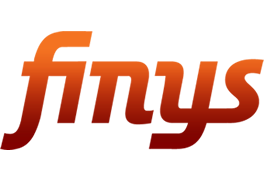Making FAIR Plans More Fair
The December edition of Best’s Review contained an article that caught our attention: ”FAIR Plan Policies Nearly Double in Five Years”. It caught our attention for two reasons. First, we write FAIR Plans. Second, there seems to be some churning in the FAIR Plan vendor market. It’s no wonder. It’s not an easy market to serve. But that’s not to say it can’t be served … and served well.
According to the article:
Insurers of homeowners and even commercial property risks have had a tough time, due to [a lack of] positive underwriting results in recent years. Some of those factors, obviously, have been the greater frequency and severity of extreme weather events and weather events of different types, be they primary perils or the perils referred to as secondary perils like severe convective storms and wildfires, etc. They’ve also been challenged by inflationary pressures that have pushed average claim costs upward.
Yes. Managing increasing demand is a challenge; i.e., adapting to the growing demand for coverage while ensuring the long-term sustainability and effectiveness of the programs. Specifically, FAIR Plans have to:
- Balance the need to provide coverage to high-risk prospects’ with the need to maintain solvency and not disrupt the insurance market’s supply-demand equilibrium.
- Manage the complexity and variability of FAIR Plans across different states, with each plan having its own structure and regulations.
In a post update on March 20th of this year, the NAIC echoed some of these challenges:
FAIR plans are typically more expensive and have limited protection than insurance obtained in the regular market … FAIR Plan insurance coverage varies by state … Coverage for personal belongings and additional structures on the property are usually only offered as optional policy add-ons. Generally, loss of use and personal liability coverages aren’t offered via FAIR plans … Some states have a single state-run plan, while others have multiple plans operated by different insurance companies … Additionally, some states have residual market mechanisms, such as assigned risk plans, which serve a similar purpose to FAIR plans … the mission of FAIR plans broadened as these plans are increasingly viewed as tools for promoting economic development in coastal areas and providing low priced insurance.
But that doesn’t mean those challenges can’t be met and managed.
No Quick Fix
There’s no magic bullet for challenges as big and numerous as the ones outlined above. And we don’t claim to have one. But we’ve become the vendor of choice for FAIR Plans for a number of reasons:
- We’ve been working with them for more than a decade.
- The Finys Suite has a standard configuration for most FAIR Plans.
- The Finys Suite is used to process more than 750 LOB combinations,
- The Finys Suite contains pre-built, LOB-specific templates for ISO, MSO, and AAIS lines.
Will that solve everything? No. Will it make it easier for FAIR Plans to write business? Yes.
It’ll also make it easier for FAIR Plans to find a vendor who’s in it for the long haul.
Reliability is underrated.





Leave a Reply
Want to join the discussion?Feel free to contribute!